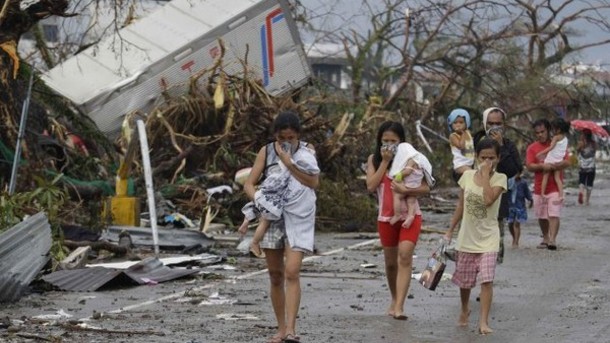
Disaster resilience in Philippines, looking forward for new solutions
“All of the houses in my village were destroyed in a snap,” says Analita Garcela, the captain of the upland village of Cambucao in Tabon Tabon, Leyte – one of the communities hardest hit by Typhoon Haiyan in 2013
Though it is already two years after the typhoon, Analita says that the tragic experience is hard to forget: “It was devastating but we had no choice but to move forward. People in my community worked hard to recover and I must say we are on the right track.”
CARE and local partner Assistance and Cooperation for Community Resilience and Development (ACCORD) have supported Cambucao through emergency food distributions, shelter repair assistance, financial support to restore livelihoods, and training on disaster risk reduction (DRR) and climate change adaptation.
The Philippines is one of the most disaster-prone countries in the world, and since Haiyan, further typhoons such as Hagupit and Koppu have further tested the recovery efforts of the affected communities. Analita says: “Good thing that we were able to rebuild and repair our damaged homes through the support of CARE.”
“We were taught how to apply the ‘Build back better’ techniques that definitely improved the quality and durability of our homes,” she adds.
After the shelter repair and livelihoods recovery support, CARE and ACCORD implemented disaster risk reduction training in the affected communities. CARE also conducted a series of DRR training sessions and community drills in Cambucao involving all the members of the community to increase their ability to prepare for and respond to natural disasters and emergencies. Analita explains:
Everyone in my community participated, from the youngest to the oldest. They saw its relevance and importance and the people themselves wanted to be well-prepared for future disasters.
The training helps community members identify resources at risk from climate hazards, analyse changes in seasonal activities, understand trends and changes over time, and develop livelihoods and coping strategies.
The community drill involved responding as a village to a Haiyan-like typhoon. Analita says: “Everyone joined the drill and they took their roles seriously. Even it was just a simulation, they acted like it was really happening.
“They went to designated evacuation areas, they brought their important belongings with them, wore raincoats and boots, and even rescued those who needed help such as trapped older people.
If the people know how to prepare, adapt and respond, it will lessen the damages and avoid cases of casualties. We thank CARE for addressing that concern.
“I could say that my community is now disaster-resilient,” she concludes.
Dennis Amata is Information and Communications Manager, CARE Philippines


